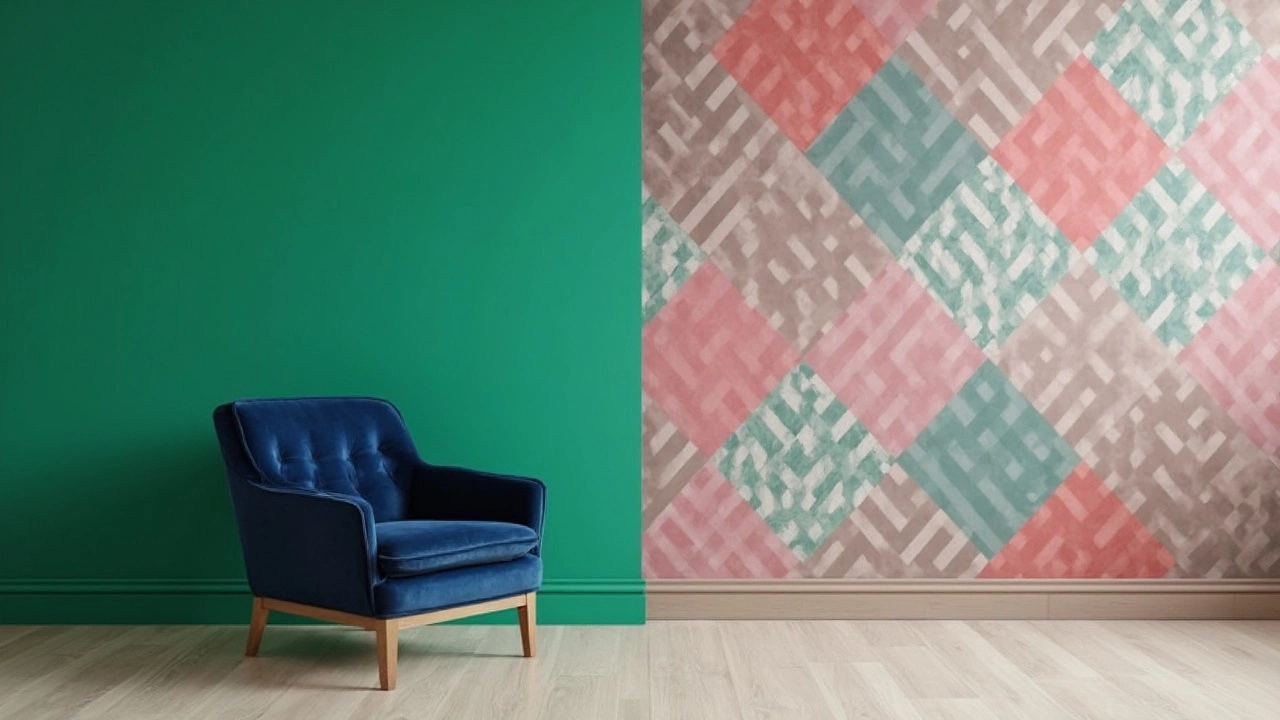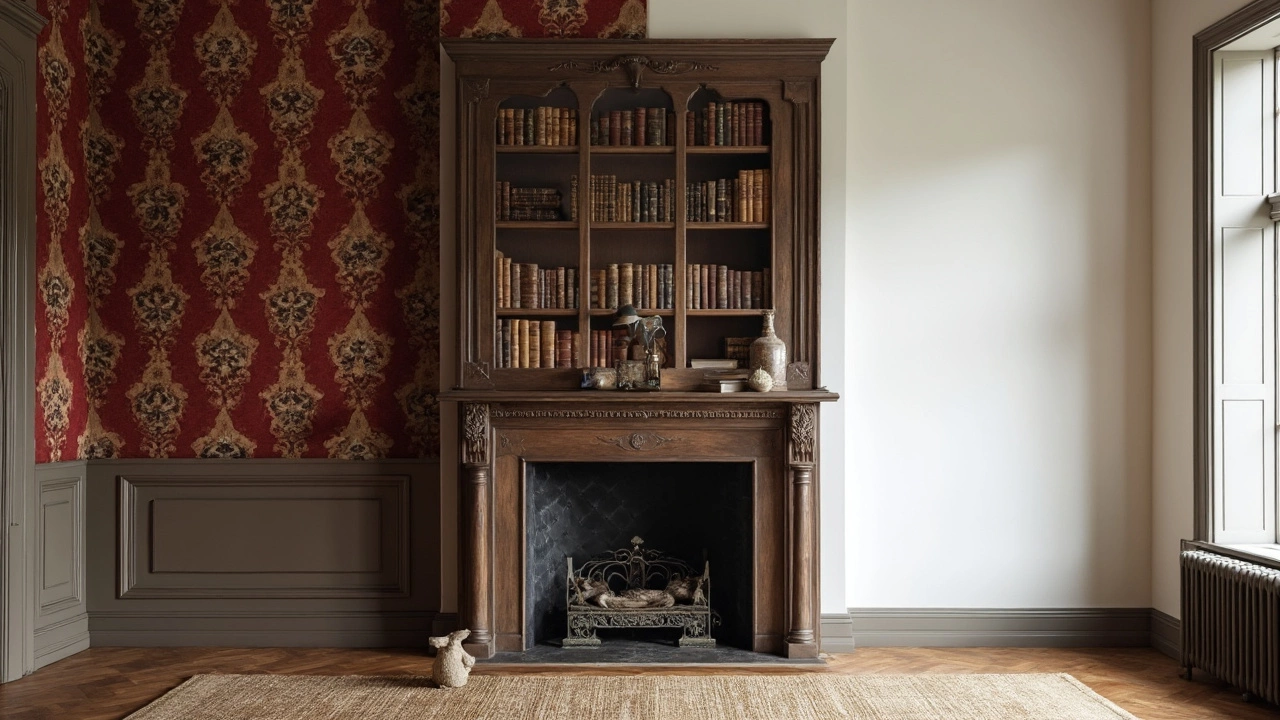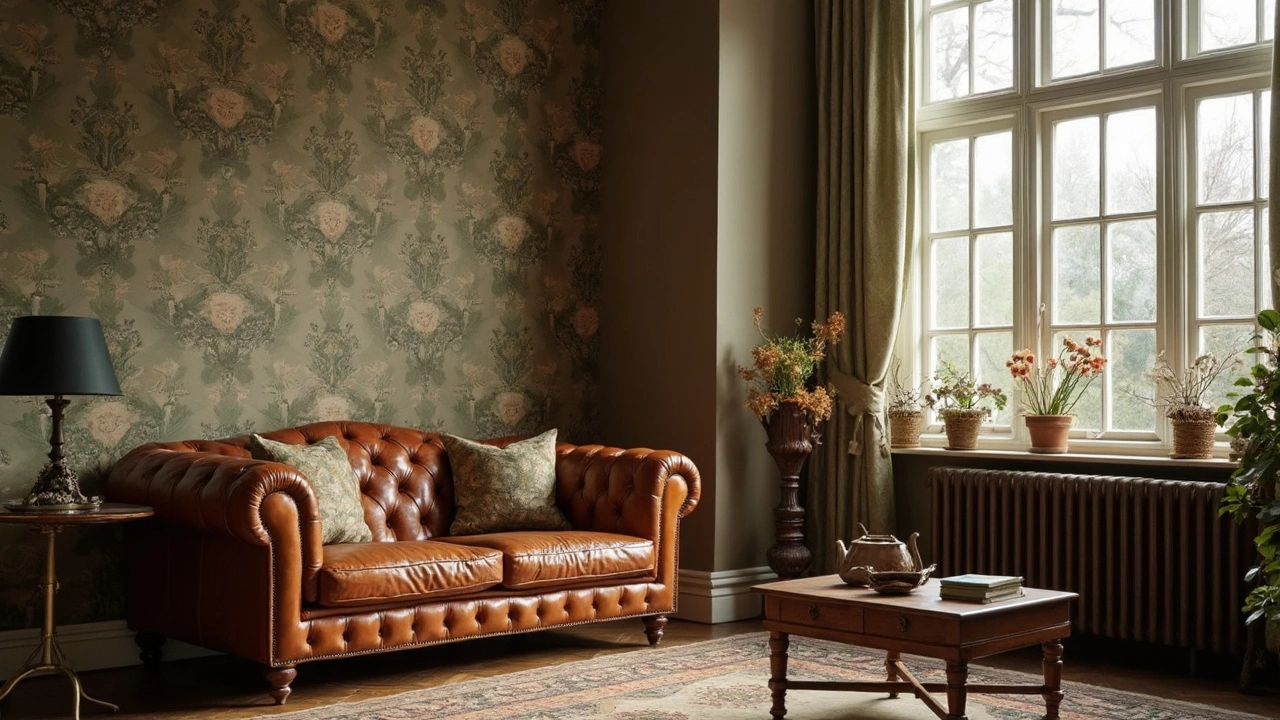So you're staring at those tired old walls, wondering if it’s time for a makeover. The question is: do you repaint or re-wallpaper?
Let’s start with costs. On average, painting a room might be kinder on your wallet—requiring just paint, brushes, and maybe a roller. Wallpaper, while initially pricier, offers a rich texture and design that can transform a room.
Of course, materials aren't everything. Labor can eat up a big chunk of your budget. While a reliable paint job can often be a weekend DIY project, wallpapering demands precision (and patience). Ever tried lining up a complex pattern? You’ll know what I mean.
- Cost Breakdown: Wallpaper vs Paint
- Materials and Tools Required
- DIY vs Hiring a Professional
- Trends in Wallpaper Design
- Maintenance and Longevity
Cost Breakdown: Wallpaper vs Paint
When it comes to home improvement, understanding where your money goes is crucial. If you're deciding between painting and wallpapering, here's what you need to know about remodeling costs.
Initial Costs
At first glance, paint seems cheaper. A gallon of basic paint costs around $20 to $50, depending on the brand and finish. For an average-sized room, you'd typically need 2 to 3 gallons of paint. Add in brushes and rollers, you're looking at a modest investment. In contrast, quality wallpaper can range from $25 to even $100 or more per roll, and an average room might need about 10 rolls!
Hidden Costs
Let's talk about the hidden costs that sneak up on you. Painting requires primer, especially if you're trying to cover a dark color. Besides, imperfections might demand additional materials, like spackle or sandpaper. Wallpaper also comes with extra costs such as adhesive, and if your walls aren't in good shape, a liner may be necessary to ensure a smooth finish.
Labor Costs
Labor is where things can really shift. A professional paint job might set you back anywhere from $200 to $500 per room, while wallpapering can easily go over $500, especially if intricate patterns are involved. Wallpapering takes more skill, and mistakes can be costly. If you’re going the DIY route, expect to spend more time on wallpaper, too.
| Item | Paint | Wallpaper |
|---|---|---|
| Material Costs | $60 - $150 | $250 - $1000 |
| Labor (Professional) | $200 - $500 | $400 - $800 |
| Extras (Primer/Adhesive) | $40 - $60 | $70 - $120 |
After considering these factors, you might think twice about what’s truly cheapest for your home improvement project. Balancing your budget with your personal style and the effort you're willing to put in will help make the final decision a bit clearer. Remember, it’s not just about cost—it’s about the final room you'll love.
Materials and Tools Required
So, which one's winning the battle of resources, paint or wallpaper? Both have their own shopping lists, and here’s what you need to know.
For Painting
Painting requires a tidy shopping trip that includes:
- Paint: Choose your finish—matte, eggshell, or gloss can change the game.
- Brushes and Rollers: Different sizes for corners, edges, and larger surfaces.
- Painter's Tape: Essential for crisp lines and avoiding accidental splashes.
- Drop Cloths: Protect your floors and furniture from those little spills.
- Tray and Grid: Perfect for getting an even coat on your roller.
These are basics, and while paint might seem straightforward, picking the right type can make a big difference in durability.
For Wallpapering
Here’s what you'll pack for a weekend of wallpaper duty:
- Wallpaper: Select based on your style and room functionality.
- Paste or Adhesive: Look for types that suit your wallpaper choice, pre-pasted or otherwise.
- Smoothing Tool: Say goodbye to bubbles and wrinkles.
- Seam Roller: Keeps those pesky edges down.
- Utility Knife: Trim the excess like a pro.
- Tape Measure and Level: Ensure your wallpaper isn’t hung askew.
Installing wallpaper might require a little more elbow grease, but the payoff can be more artistic than paint.
Feeling overwhelmed, or think it could get costly? Here's a quick look at what you're dealing with:
| Item | Approximate Cost |
|---|---|
| Paint (per gallon) | $20 - $50 |
| Wallpaper (per roll) | $30 - $150 |
| Tools and Accessories | $30 - $100 |
Whether your wallet is leaning towards a simple coat of paint or a bold wallpaper statement, knowing the resources involved can guide you to the perfect walls.

DIY vs Hiring a Professional
Deciding whether to tackle a home improvement project yourself or hire a professional isn't just about cost—it's about skill and time, too. If you've ever wondered whether the DIY route will save you cash or end up being a headache, you're not alone. Let’s dig into some specifics.
Time and Skill Set
When you choose to paint or wallpaper yourself, the biggest gains come from not paying for labor. But are you confident with a paintbrush or a smoothing brush? Installing wallpaper can feel like tackling a giant puzzle—especially with detailed patterns. Meanwhile, painting might just need a steady hand to avoid those pesky drips.
If you're tight on time, professionals swarming in with their experience might be a lifesaver. They can often transform a room in a day or two.
Tools and Materials
Going the DIY route means getting your hands on the right tools. For painting, you’ll need brushes, rollers, drop cloths, and painter’s tape. If wallpaper’s your jam, consider adding pasting tables, smoothing tools, and a sharp knife for trimming. When hiring pros, they've already got the gear. You’re paying for their skills—and their toolkit.
Cost Considerations
- DIY: Generally cheaper but requires an investment in materials and tools.
- Professional: Higher upfront cost but saves on potential mistakes and re-dos.
On average, expect to pay anywhere from $35-50 per hour for a professional painter, and even more for specialized wallpapering experts, often arriving with supplies and expertise.
A quick calculation: If you've got a standard-sized room, a pro's fee might start around $300 for paint, while wallpapering might push towards $500, considering the intricate nature of the task.
Whether you love the satisfaction of DIY or prefer leaving it to the pros, weigh these factors and decide what suits your project, timescale, and budget best. Each option has its pros and cons, and only you can determine the perfect method for banging out that next room reno.
Trends in Wallpaper Design
If you haven't checked out wallpaper trends lately, you're in for a treat. Today's designs are a far cry from your grandma's florals. They're hotter than ever, with bold, graphic patterns and textures leading the charge.
Modern Geometrics
Geometry isn't just for math class. Modern geometric patterns are a top pick for those looking to add a contemporary flair to their spaces. Think striking lines and shapes, usually with a splash of color. These designs can create depth and dimension in any room.
Nature-Inspired Prints
Biophilic design is all about bringing the outside in. Wallpaper featuring lush botanicals or scenic landscapes can make your room feel more alive. Tropical leaves, serene forests, and even underwater scenes are popular choices for creating a calming environment.
Textures and Materials
Plain old flat wallpaper? Passé! Textured interior design options are here to stay. From faux brick and wood to metallic finishes, texture brings a unique tactile element to walls. They’re especially fantastic for accent walls or creating a focal point in a room.
Digital Art and Murals
With advancing technology, custom digital prints and murals are within reach. These home improvement options allow for personal expression and unique design statements. Whether it's a city skyline or a quirky abstract design, the possibilities are endless.
Eco-Friendly Designs
Sustainability is a growing concern, and it’s reflected in wallpaper choices. Many manufacturers now offer eco-friendly wallpapers made from recycled materials or using sustainable practices. It's a win-win for style-savvy and environmentally-conscious homeowners.
Feeling inspired yet? These trends showcase the versatility and creativity of wallpaper in transforming homes. Remember, choosing a design that reflects your taste can make all the difference.

Maintenance and Longevity
When it comes to longevity, wallpaper might be the way to go if you’re looking for durability. Quality wallpaper can last up to 15 years or more, provided it’s well maintained. It’s like putting armor on your walls. On the other hand, paint tends to show wear and tear after 5-7 years, especially if you have kids who think walls are their canvas.
Maintenance Made Simple
Keeping both wallpaper and paint looking fresh involves regular upkeep, but they differ slightly. For painted walls, you might need a touch-up from time to time and keep an eye out for peeling or fading in direct sunlight. A quick wipe with a damp cloth usually does the trick for most marks and smudges.
- Paint Maintenance: Touch-up as needed, watch for fading or peeling, clean with damp cloth.
- Wallpaper Maintenance: Dust regularly, spot clean with mild detergent, repair tears quickly.
Wallpaper, depending on its type, can be relatively easy to clean. Vinyl wallpapers particularly resist stains and are washable, making them ideal for kitchens or kids’ rooms. As a rule of thumb, regularly dusting wallpaper and dealing with any marks promptly keeps it in tip-top shape. Some patterns, though, might hide dirt better, giving you a little more leeway.
Know When to Refresh
The need to refresh wallpaper or paint isn't just about wear and tear—it’s also about trends. Changing wallpaper trends might tempt you to update sooner than you planned. Fiona Allardyce, a noted interior design expert, once said,
"A well-chosen wallpaper or paint color is the backdrop to your life. It evolves with you and sometimes, that means it’s time for a change."
Interestingly, some folks prefer paint because it’s easier to switch up. You can repaint a wall in a weekend, while removing old wallpaper needs more commitment. But when you consider longevity, if you've picked the right design from the get-go, wallpaper might be the winner in the long run.
| Option | Average Lifespan | Maintenance |
|---|---|---|
| Wallpaper | 15+ years | Dust regularly, spot clean |
| Paint | 5-7 years | Touch-up, wipe smudges |
